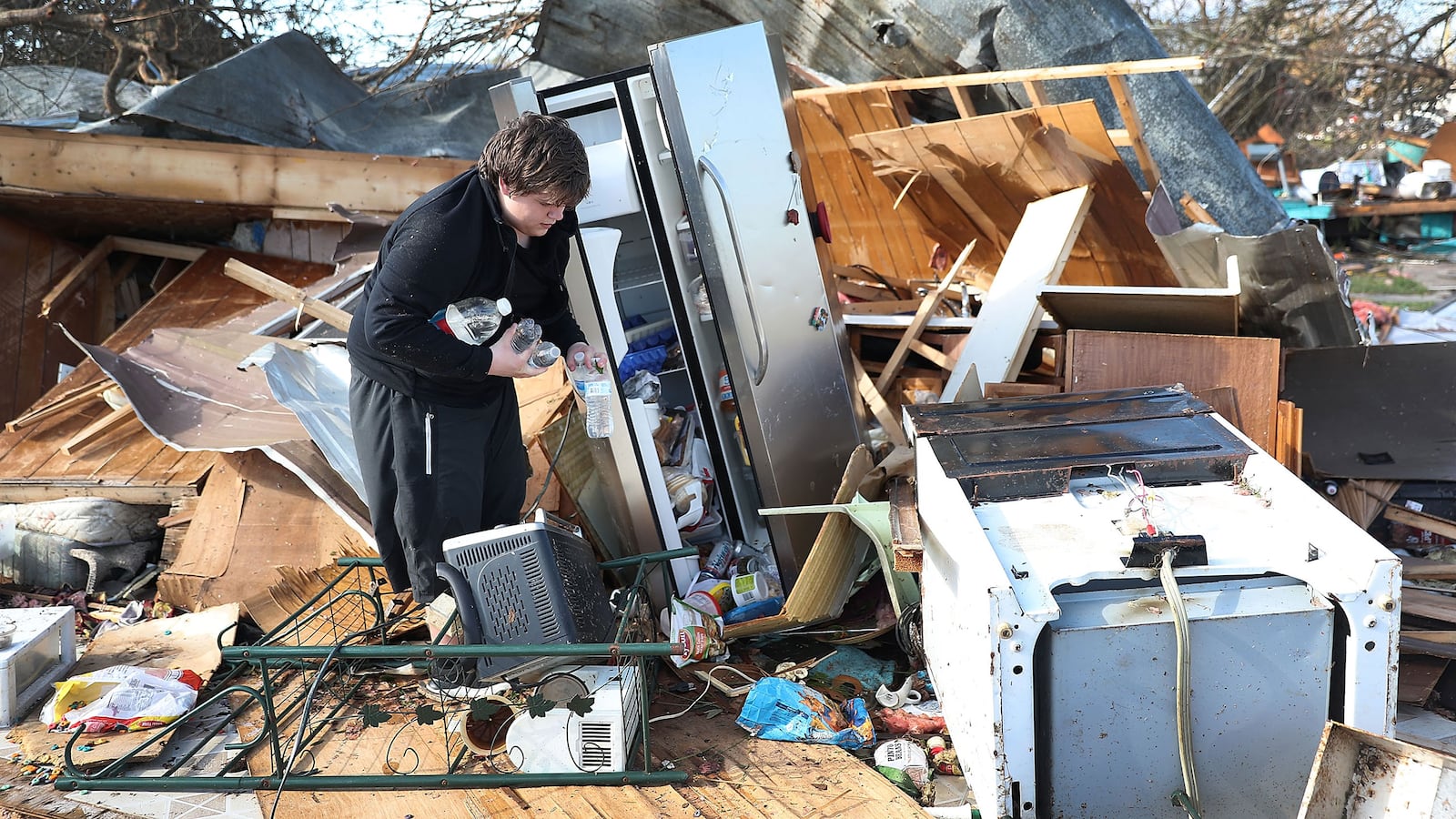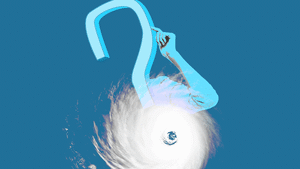PANAMA CITY, Florida—Hurricane Michael’s sudden transformation into an unprecedented storm haunts everyone on the Florida Panhandle who lived through it. “It was raw power,” says Panama City resident Walter McAlster, “you felt you were in it, not outside and didn’t know if you would live through it. You knew that everything was going to change the landscape forever.”
And it did, in the space of three hours.
The destruction is everywhere, at every corner, as far as the eye can see. Mexico Beach, where the hurricane’s eyewall slammed into Florida with 140 mph winds, is flattened. Panama City, gem of the Emerald Coast, looks like a bomb has been dropped on it. It is now a desolate landscape of toppled power poles, transformers, electrical lines, severed trees, and metal roofings, twisted and tangled into a sea of debris. Nearly all homes, businesses, stores, banks, schools are severely damaged or destroyed, skeletal remains with blown out windows or crushed facades. To residents, it is unrecognizable.

A roof over a boat storage building that collapsed following Hurricane Michael on Oct. 11, 2018, in Panama City Beach, Florida.
Chris O'Meara-Pool/GettyThere is so much rubble that the official death toll of 17 as of Sunday afternoon is expected to rise as search-and-rescue teams inspect thousands of buildings, looking for the missing. A team from the Miami Fire Department found a body in a Mexico Beach home on Friday. About 1,700 workers have checked 27,000 homes, Gov. Rick Scott said after meeting with emergency responders on Saturday evening.
The debris has rendered most roads and streets virtually impassible for evacuees and first responders. Electric poles bent at 90 degrees and power lines strewn like spaghetti cover most lanes. Nearly all transformers were destroyed. Vehicles dodge ruined trees, split like toothpicks or uprooted by the power of the storm.

View of the damaged caused by Hurricane Michael when it hit Mexico Beach, Florida, on Oct. 10, 2018.
HECTOR RETAMAL/AFP/GettyDriving across the Apalachicola National Forest reserve that borders the coast was like touring a cemetery: endless rows of decapitated trees, leaning perfectly aligned like fallen prisoners who had been executed. Electrical poles 30 feet high have been split in half, their power lines strewn across the macadam. It went on like this for 60 miles.
Since the storm, there’s been no electricity and no water in Panama City. Emergency disaster relief was yet to be seen in strength as of Saturday morning and residents were growing more frustrated and desperate.
Chantelle Goolspy sat in her car making phone calls to get help. Goolspy and many of her neighbors live in a public housing area in downtown Panama City that was badly devastated.
“We’re in need of food, water, anything, we’re not getting any help. The whole street needs help,” Goolspy told the Red Cross. “FEMA referred me to you. That person told me to call 211.”

Chantelle Goolspy and her son, Antoine.
Ingrid Arnesen/The Daily BeastDown the street, Barbara Sanders stood outside her daughter’s unit, where she had come to stay during the hurricane.
“We’re not getting any help,” she said. “We need food. It’s just crazy.”
Sanders said that not a single relief agency had come by to check on them. Only the police had come and it was to tell everyone to leave. “They told us there’s nothing they can do and it’s gonna take a long time to rebuild,” Sanders said.
Just then a pick-up truck arrived with water. It was the first help this neighborhood had received and it turned out to be two brothers—Chris and Brendon Hill, from Louisiana—who had decided to come and help.

Homes destroyed by Hurricane Michael are shown in this aerial photo on Oct. 11, 2018, in Mexico Beach, Florida.
Chris O'Meara-Pool/GettyIn neighboring Panama City Beach, city manager Mario Gisbert wasn’t going to wait for federal emergency assistance. Volunteers from Florida and other states brought water, set up a food kitchen for police, and prepared 1,500 meals for locals. A local church is preparing to distribute meals at 15 stations in Panama City.
“The American people are helping us,” Gisbert said. “FEMA will eventually come into the game and get the accolades in six months.”
Sen. Marco Rubio of Florida told CNN on Sunday morning he had not seen any local or state requests of FEMA unfulfilled. A FEMA representative told a local TV station the agency’s employees in the Panhandle are assessing damage and residents should immediately apply for disaster relief if they aren’t eligible for insurance claims.
Federal, state, and local officials were hunkered down at the Emergency Operations Center (EOC) set up at Gulf Coast State College in Lynn Haven, trying to get urgently needed food and water to residents. The EOC turned down The Daily Beast’s request to speak with the EOC chief, Mark Bowen, and city officials. Spokesperson Catie Feenie said the focus was on “coordinating some patrols who are in life-saving mode” for the 60,000 residents who had not evacuated before the hurricane, like Goolspy and Sanders.
“We’re telling everybody to save [food and water] because it will be days before we’re ready to do that,” Feenie said.
At a press conference in Panama City on Saturday evening, Gov. Scott stressed the same point.
“Everybody just needs to help each other right now,” he said.
About 4,000 members of the Florida national guard have been activated and 2,000 law enforcement personnel have been sent to the Panhandle. Meanwhile, some 17,000 utility workers are busy restoring power to 245,000 Florida homes and businesses without electricity.

Boats in dock were reduced to rubble when Hurricane Michael passed through Panama City, Florida, on Oct. 10, 2018.
Joe Raedle/GettyOfficials said schools have been closed indefinitely, but word hadn’t gotten out. Goolspy’s 13-year son, Antoine, was hopeful he could return soon. “I don’t want to repeat my seventh grade because without education you can’t get ahead,” he said, adding he couldn’t wait to take a shower, too.
Word about not getting water or meals had not yet reached rural communities inundated by the hurricane’s rains and storm surge. In Gadsden County, outside Tallahassee, where the storm killed four people, county commissioner Anthony Viegbesie said he had not seen a single relief agency.
“This is a community that lives on agriculture. Without electricity, the wells don’t work,” he said. “We survive primitively.”







